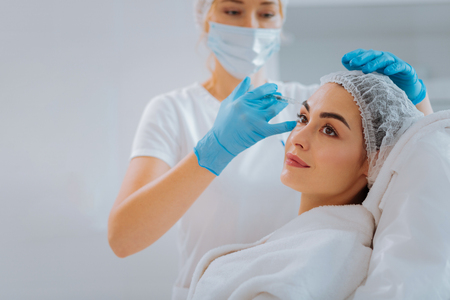Introduction: Embracing Diversity in British Aesthetics
Britain is a vibrant tapestry woven from countless cultures, backgrounds, and heritages. From the bustling markets of London to the historic streets of Birmingham and the spirited communities of Manchester, the UK is renowned for its multicultural reality. This diversity enriches not only our daily lives but also shapes how we perceive beauty and approach aesthetic treatments. In today’s Britain, recognising and respecting these differences is more than just good practice—it’s essential for delivering truly personalised care.
As aesthetic practitioners, embracing this rich spectrum means going beyond the surface. It calls for a genuine sensitivity to the unique cultural values, traditions, and expectations that clients bring with them. In a society as beautifully diverse as ours, understanding that beauty ideals are not universal—nor should they be—is at the heart of ethical and effective treatment. The importance of cultural sensitivity cannot be overstated; it underpins trust, fosters confidence, and ensures that every client feels seen, heard, and valued.
Setting the stage for culturally informed aesthetics isn’t about ticking boxes or following trends—it’s about building meaningful connections and delivering results that resonate with each individual’s identity. As we explore the landscape of British aesthetics together, let’s keep this commitment to respect and inclusivity at the forefront of our practice.
2. Skin Type Variations Across Communities
The United Kingdom is a vibrant tapestry of cultures, each bringing its own unique genetic heritage and, consequently, a diverse range of skin types. Understanding these variations is not just about aesthetics—it is essential for ensuring both the safety and efficacy of any aesthetic treatment.
The Spectrum of Skin Types in Britain
British communities encompass a wide spectrum of skin types, classified medically using the Fitzpatrick Scale. This scale is widely used by clinicians to assess how different skin types react to sun exposure and medical treatments. Let’s break down the typical skin types found across British communities:
| Fitzpatrick Type | Description | Common Heritage Groups in UK | Treatment Considerations |
|---|---|---|---|
| I-II | Very fair to fair; often burns, rarely tans | Northern European (e.g., English, Scottish, Irish) | Higher risk of pigmentation changes and sensitivity; requires gentle approaches and strong sun protection advice |
| III-IV | Medium to olive; sometimes burns, gradually tans | Mediterranean, South Asian, Middle Eastern backgrounds | Prone to post-inflammatory hyperpigmentation (PIH); careful selection of laser parameters and topical agents needed |
| V-VI | Brown to deep brown/black; rarely burns, deeply pigmented | African, Afro-Caribbean, some South Asian backgrounds | Higher risk of keloids and PIH; requires specialist knowledge in treating darker skin tones safely and effectively |
Why Understanding Matters in Practice
Diving beneath the surface, it becomes clear that a one-size-fits-all approach simply does not work in Britain’s multicultural society. Misunderstandings can lead to adverse effects such as unwanted pigmentation changes, scarring, or ineffective results—outcomes no one wants. When practitioners recognise the unique needs presented by various skin types, they can:
- Select appropriate products and technologies tailored for individual skin responses.
- Minimise risks by customising pre- and post-treatment care instructions.
- Create an inclusive environment where every client feels confident that their heritage is respected and understood.
Cultural Sensitivity Builds Trust
It’s important to remember that cultural awareness goes hand-in-hand with clinical expertise. Listening to clients’ personal experiences with their skin—such as traditional skincare routines or concerns about certain treatments—fosters trust and enhances outcomes. Ultimately, when you commit to understanding the full spectrum of British skin diversity, you empower your clients to feel seen, valued, and beautifully confident in their own skin.
![]()
3. Cultural Attitudes Toward Beauty and Aesthetics
Within Britain’s vibrant tapestry of communities, perceptions of beauty are as diverse as the people themselves. Understanding these nuanced attitudes is essential for any practitioner seeking to offer genuinely tailored aesthetic treatments. While mainstream British ideals may often be shaped by popular media, there is a growing appreciation for individuality and self-expression across the country. However, the aesthetic goals and preferences within various cultural groups frequently reflect deep-rooted traditions, social values, and even religious beliefs.
For instance, in some South Asian communities across the UK, radiant skin and harmonious facial features are prized, with many individuals favouring subtle enhancements that respect natural contours rather than dramatic changes. Meanwhile, Afro-Caribbean Britons may prioritise maintaining the unique textures of their hair or enhancing natural features such as full lips and high cheekbones—celebrating heritage while embracing modern aesthetics. Eastern European communities might express preferences for symmetry and clear complexions, reflecting influences from both their native cultures and contemporary British trends.
It’s crucial to recognise that many clients’ aesthetic desires are deeply personal yet shaped by collective experiences within their cultural backgrounds. Open dialogue is key; asking thoughtful questions about what “beauty” means to each individual fosters trust and ensures outcomes that feel authentic. As practitioners in Britain, embracing these cultural distinctions not only enriches our professional approach but also empowers clients to pursue treatments that honour both their identity and aspirations.
4. Communication and Building Trust
When delivering aesthetic treatments to Britain’s richly diverse communities, communication is more than just exchanging words—it’s about nurturing trust and forging genuine connections. Practitioners must be mindful that each client brings a unique cultural perspective, shaped by their background, language preferences, and lived experiences. By adopting respectful dialogue and inclusive language, professionals can foster a welcoming environment where every individual feels valued and understood.
The Art of Mindful Communication
Respectful communication begins with active listening. Rather than making assumptions based on appearance or accent, take the time to understand clients’ specific needs, motivations, and any cultural considerations they may have. Simple gestures—like pronouncing names correctly or asking about pronoun preferences—can go a long way in signalling respect and openness.
Inclusive Language: Words Matter
Language shapes perception. Using inclusive terminology ensures that clients from all walks of life feel seen and respected. This means avoiding stereotypes or generalisations about beauty standards, skin types, or age-related concerns. Instead, focus on personalised care and empower clients to express their individual goals.
| Exclusive Language | Inclusive Alternative |
|---|---|
| “For lighter skin tones only” | “Suitable for all skin tones; customisable for your needs” |
| “Women of a certain age” | “Clients seeking age-positive solutions” |
| “Ethnic skin issues” | “Skin health for diverse backgrounds” |
Building Trust Across Cultures
Trust is earned through consistency and cultural sensitivity. Take the time to learn about the values and beliefs prevalent within British sub-communities—whether South Asian, Afro-Caribbean, Eastern European, or others—and integrate this knowledge into your consultation process. Be transparent about treatment options, aftercare, and potential outcomes so clients can make informed decisions without feeling pressured or misunderstood.
Ultimately, when practitioners prioritise mindful communication and inclusivity, they not only enhance client satisfaction but also contribute to a more equitable and compassionate landscape for aesthetic care throughout the UK.
5. Adapting Treatment Protocols Responsibly
When delivering aesthetic treatments in the UK’s richly diverse communities, it is essential to move beyond a one-size-fits-all approach. Each individual brings a unique set of cultural values and physiological characteristics that practitioners must consider for both ethical and effective care. Responsible adaptation of treatment protocols begins with open, respectful dialogue. Listening to clients’ preferences, beliefs, and concerns—whether regarding modesty, religious practices, or community expectations—fosters trust and ensures personalised care. For example, some British Muslim women may prefer female practitioners or private treatment spaces for modesty reasons. Similarly, those from South Asian or Afro-Caribbean backgrounds may have specific skin sensitivities or healing patterns that require tailored procedures.
Understanding Physiological Differences
British communities encompass a spectrum of Fitzpatrick skin types, each reacting differently to lasers, chemical peels, and injectables. Melanin-rich skin is more susceptible to post-inflammatory hyperpigmentation or keloid scarring. Practitioners must adjust device settings and product selection accordingly, offering patch tests and using gentle techniques to minimise risks. These adaptations are not just technical necessities—they demonstrate respect for the client’s individuality and wellbeing.
Culturally Sensitive Aftercare
Aftercare advice should be as personalised as the procedure itself. Some clients may observe fasting periods or avoid certain topical products due to religious beliefs; others may have traditional remedies they trust. Providing aftercare instructions in accessible language—potentially offering translated materials—and acknowledging these practices empowers clients in their recovery journey. Encouraging dialogue about home remedies or alternative therapies helps practitioners advise on safe integration with clinical care.
Empowering Clients Through Education
Educating clients about what to expect based on their unique skin type and lifestyle nurtures confidence and clarity. Practitioners should proactively discuss potential side effects, timelines for visible results, and realistic outcomes tailored to each background. When British aesthetic professionals honour both cultural context and physiological nuance, they deliver results that go beyond skin deep—supporting not just appearance but also self-esteem within every community they serve.
6. Case Studies: Learning from British Practice
To truly appreciate the impact of culturally informed aesthetic care, it is essential to look at real-world examples where practitioners in the UK have excelled in personalising treatments for diverse communities. These case studies not only illustrate best practices but also serve as inspiration for professionals striving to offer more inclusive and effective services.
Case Study 1: Adapting Skin Treatments for South Asian Clients
A leading London clinic recognised that many of their South Asian clients experienced post-inflammatory hyperpigmentation (PIH) after standard chemical peels. By listening attentively to patient concerns and researching the unique physiology of darker skin tones, practitioners adjusted protocols—opting for gentler acids and pre-treatment pigmentation inhibitors. The result? Higher client satisfaction, improved outcomes, and a surge in referrals within local South Asian communities.
Case Study 2: Embracing Afro-Caribbean Hair and Skin Needs
In Birmingham, a practice specialising in laser hair removal noticed that clients with Afro-Caribbean backgrounds often felt neglected due to concerns about equipment suitability. The clinic invested in advanced laser technology designed specifically for darker skin and provided ongoing staff training on cultural sensitivities. Clients reported increased trust and comfort, transforming the clinic’s reputation within the community.
Case Study 3: Respecting Religious Observances in Aesthetic Scheduling
An aesthetics provider in Manchester observed that Muslim women frequently requested appointments outside Ramadan or preferred female-only environments. By introducing flexible booking options and ensuring gender-sensitive staff availability, they fostered an atmosphere of respect and understanding. This consideration led to lasting relationships and strong word-of-mouth recommendations among local Muslim families.
Key Takeaways from British Practice
- Listening First: Practitioners who succeed are those who actively listen to client needs rather than making assumptions based on appearance alone.
- Cultural Competence Training: Investing in ongoing education equips teams to better understand and celebrate differences.
- Customised Treatment Protocols: Adjustments—whether technological or procedural—demonstrate respect for individual identity and produce superior results.
Building Trust Through Personalisation
The most successful UK clinics are those that weave cultural sensitivity into every client interaction. These examples prove that going beyond skin deep creates not just beautiful results, but also stronger bonds with the diverse British communities we proudly serve.
7. Conclusion: Fostering Inclusivity in Aesthetic Care
Embracing the rich diversity of British communities is not just a matter of cultural sensitivity—it is the cornerstone of truly effective and compassionate aesthetic care. By recognising and respecting the unique backgrounds, skin types, and beauty ideals that exist across the UK, practitioners can deliver personalised treatments that go far beyond surface-level results. When clients feel genuinely seen and understood, trust flourishes, satisfaction increases, and long-term loyalty is built.
The Benefits of Embracing Diversity
Practitioners who prioritise inclusivity unlock a host of benefits for both their clients and their practice. Culturally attuned care reduces misunderstandings, minimises risks associated with unsuitable treatments, and enhances outcomes for all skin tones and types. Moreover, it positions clinics as welcoming spaces where everyone feels valued—an essential factor in today’s multicultural Britain.
Practical Steps Towards Inclusive Practice
- Ongoing Education: Stay informed about the latest research on different skin types and cultural beauty norms relevant to your local community.
- Open Dialogue: Invite clients to share their preferences and concerns without judgement. Listening is key to understanding individual needs.
- Diverse Representation: Ensure marketing materials reflect a broad spectrum of ethnicities and ages, signalling that your services are accessible to all.
- Culturally Sensitive Consultations: Use language that is respectful and avoid assumptions about what each client might desire from an aesthetic perspective.
A Gentle Call to Action
Let us move beyond merely treating the skin—we must strive to celebrate the person beneath. By weaving inclusivity into every interaction and treatment plan, practitioners create a ripple effect of confidence, dignity, and belonging within their communities. Together, we can ensure that aesthetic care in Britain is not just skin deep, but truly transformative for every individual who walks through our doors.


